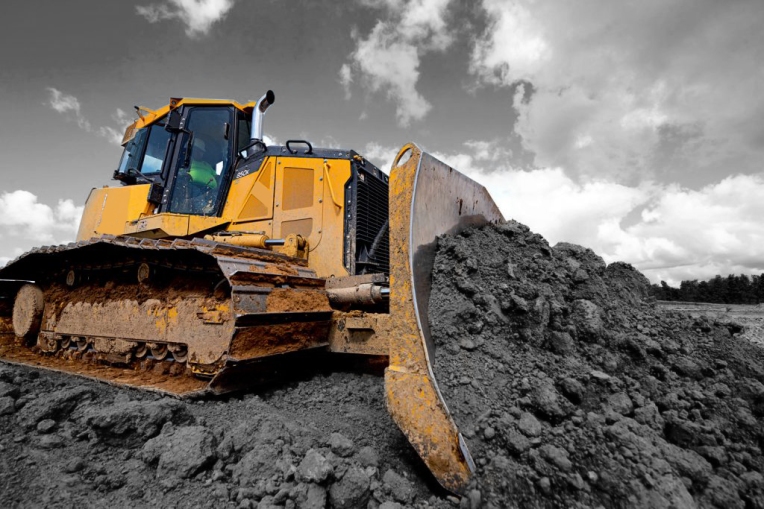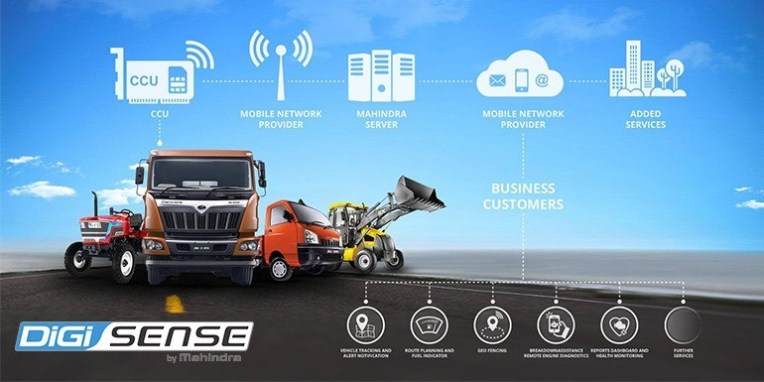The investments in infrastructure sector are the key growth drivers for the construction equipment industry. The road building and earth moving equipment are expected to drive overall Indian construction machinery market in 2017-18 on the back of big investment announcement for transportation sector in Budget.
India’s Finance Minister Mr. Arun Jaitley gave transport sector the ‘Uber’ moment by allocating a huge Rs. 2.41 lakh crore to build and modernize country’s Railways, Roads and Ports sectors in 2017-18. The investment would help in boosting the demand for road building and different types of earth moving and material handling equipment across the country during the period.
In India, Earthmoving machinery and road building equipment alone consist around 78 percent of market share of Indian construction equipment industry. The Rs. 2.41 lakh crore proposed investments in transport sector indicate both segments would surely drive the market in 2017-18.
For the road sector, Mr. Jaitley has allocated Rs. 64,900 crore for construction and expansion of Highways and also 2,000 km of coastal connectivity roads will be developed in the next financial year.
In addition, The Government has allocated a sum of Rs. 19,000 crore towards Pradhan Mantri Gram Sadak Yojana (PMGSY) in 2017-18 to complete the current target under PMGSY by 2019, and together with the contribution of States, an amount of Rs. 27,000 crore is to be spent on PMGSY in 2017-18. The pace of construction of The Pradhan Mantri Gram Sadak Yojana (PMGSY) has accelerated to reach 133 km roads per day in 2016-17, as against an average of 73 km during the period 2011-2014.
This investment on building rural roads and highways would create the demand for different road building equipment like Motor Grader, Chip Spreader, Cold Planers, Compactor, Paver, Paving Plant, Asphalt Mixing Plant, Road Roller Machine and others. Both new and used road building equipment will witness the demand during the period.
The Railways Ministry will lay down 3,500 km railway tracks in the next financial year, up from 2,800 km in 2016-17 and also announced to redevelop at least 25 stations. The government unveiled the largest-ever rail budget of Rs. 1.31 lakh crore for the next financial year.
In the budget, The Finance Minister said, “A new Metro Rail Policy will be announced with focus on innovative models of implementation and financing, as well as standardisation and indigenisation of hardware and software. A new Metro Rail Act will be enacted by rationalising the existing laws to facilitate greater private participation and investment in construction and operation.”
Commenting on the Budget, Mr. Dimitrov Krishnan, Vice president and Head of Volvo CE India said, “The agriculture, housing, rural development, and infrastructure sectors, in particular, will benefit from the increased outlays set aside for them in this Budget. In particular, with the record INR 3.96 lakh crores allocated to infrastructure, we can look forward to greater activity in the construction of roads, railways, and ports. We can expect high demand for construction equipment and, as a company, Volvo CE is looking forward to play a role in India’s infrastructural development. Overall, this budget is a blueprint for sustainable long-term growth in our country, and execution of these strategies will be key now for the rest of the year.”
The investments of Rs. 2.41 lakh crore for Railways, Roads and Ports infrastructures in 2017-18 are set to drive different kinds of earthmoving equipment such as Backhoe Loaders, Excavators, Skid steer loaders, and others, Material Handling equipment such as Cranes, Tower Cranes, Mobile, Tippers, Haul Trucks and others, and Concreting equipment like Concrete Batching plant, Concrete Mixer, Concrete pumps, Shotcrete Machine and others.
Source: Information has been obtained from GoI


 Construction business requires huge investment and a major chunk of investment goes for buying heavy construction machinery depending upon the project requirement. Therefore, it is always advisable to minimize the cost of the investment to make maximum profit out of the project.
Construction business requires huge investment and a major chunk of investment goes for buying heavy construction machinery depending upon the project requirement. Therefore, it is always advisable to minimize the cost of the investment to make maximum profit out of the project. Upgradation of the technology is the need of the hour for survival in automation industry, especially in construction industry for smooth and error-free functioning at job sites. On the same line, John Deere one of the leading construction and farm equipment equipment makers in the world has upgraded its SmartGrade technology in its new model of crawler dozers.
Upgradation of the technology is the need of the hour for survival in automation industry, especially in construction industry for smooth and error-free functioning at job sites. On the same line, John Deere one of the leading construction and farm equipment equipment makers in the world has upgraded its SmartGrade technology in its new model of crawler dozers. Mahindra & Mahindra Ltd, a part of Mahindra Group has launched Mahindra DiGiSENSE, it is a revolutionary technology solution that connects Mahindra vehicles, tractors, trucks and construction equipment to the cloud, opening up a whole new dimension to the experience of vehicle ownership.
Mahindra & Mahindra Ltd, a part of Mahindra Group has launched Mahindra DiGiSENSE, it is a revolutionary technology solution that connects Mahindra vehicles, tractors, trucks and construction equipment to the cloud, opening up a whole new dimension to the experience of vehicle ownership.